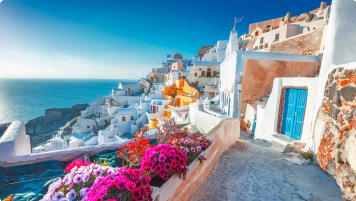Crete history; a guide for small group tours
Crete, the largest of the Greek islands, stands as the southernmost border of Greece. Its position sees it as acting as something of a communication bridge between the African continent and Europe.
30 May 20 · 23 mins read

Crete history; a guide for escorted small group tours.
Crete, the largest Greek island, stands as the southernmost border of Greece. Its position sees it as acting as something of a communication bridge between the African continent and Europe. Today much of this ancient Greek island lies virtually untouched with an imposing collection of mountains and a rugged gorge or two, halting many of the planned efforts to explore the isolated regions of Crete.
Since 1983 Odyssey Traveller has been offering guided small group tours to mature and senior travellers to almost 200 destinations around the world. Our escorted small group tour of Crete remains a popular choice as destination for couples and solo travellers seeking an introduction to the place that was the crossroads for Africa and Europe. Crete‘s Minoan civilisation was the original supplier of luxury goods to the Ancient Greeks. It tended to be that whoever controlled Crete controlled the Mediterranean sea and the associated trade from Alexandria and the Black Sea. This article seeks to set the historical scene for our escorted small group tour of Crete or Greece tour for you and your tour director. To understand and appreciate in detail the fascinating history that has evolved in Crete over the centuries, your Crete tour should get beyond a regular escorted tour visiting a Greek island on a day trip such as Mykonos, visiting the old town, wine tasting and a visit to olive grove. What Odyssey seeks to offer on its escorted small group tour of Crete is to learn and understand the history and the role of the place in the Mediterranean sea.
For Odyssey Traveller our escorted small group tour of Crete for the senior traveller acknowledges the importance of these places such as Mykonos and the stunning scenery of the turquoise seas, the sandy beaches and culinary delights in the itinerary. However, this guided tour seeks to take the traveller on a small group tour of Crete that also provides an understanding of the historical context and important contribution key events have had in shaping the nation through a collection of day tour activities to the archaeological site (s) of im portance as well exploring on a guided tour of the relevant sections of the archaeological museum to put the ancient ruins visited with your tour manager into historic context as you travel round the fascinating Greek island, that is Crete that held the key for such a long period of time in the strategic control of the Mediterranean sea.
Perhaps due to the often daunting, inviolate landforms, time immemorial has seen Crete as the centre for an ingrained and complex mythology. Examine of any of the Greek mythology revolving around Crete and you will begin to experience and feel the power that Crete had already generated back deep in prehistoric times. This mythological story about Cronus the king of the gods is an example.
The king among the gods, Cronus
The king among the gods, Cronus was supposedly all-powerful but was riven with the terrifying human traits of jealousy and insecurity. He continually worried that there was something or someone waiting to knock him from his throne. Rather than risk having any of his offspring grow and threaten his position, he killed all of children at birth. His wife, Rhea, became tired of carrying children only to remain childless because of her husband’s fears. Realising she was once again pregnant, she retreated deep inside one of Crete’s many caves, the Dictean Cave, to protect her soon-to-be born child.
Soon after the birth, for added security of the child-god, he was moved to the Ida cave on Mt Psiloritis, the highest mountain on the island. Here under the protection of the nymph Amalthia, he was raised with wild bee honey and goat milk both still abundant in much of Crete today. When Zeus was grown and felt ready he faced his cruel father, triumphing and banishing the old king Cronus.
Taking his rightful place as ruler of the gods on Mt Olympus (mainland Greece), Zeus married the goddess Hera, although the myths tell us he availed himself of others among the goddesses. Some may point to the demands of goddesses as the basis for his change of tack but whatever the reason Zeus began to stray with women of a more mortal nature. His legendary love affair with the princess Europa sees the god kidnapping her and spiriting her back to his birthplace Cretewhere he fathered three children with her. Soon the young god tired of the princess so he gifted her and the three children to the king of Crete, Asterion. One of these children was Minos, the future and greatest king of Crete.
The myths surrounding Minos continue with his construction of a lavish palace and his famed Labyrinth both designed by the architect Daedalus. The labyrinth supposedly enclosed the Minotaur with the head of a bull and the body of a man. It was to the Minotaur that the Athenians on mainland Greece paid an annual blood tribute in the form of seven maidens and seven youths. The feeding of the Minotaur continued until Theseus, with the help of Ariadne, King Minos’s daughter, navigated the Labyrinth and slew the monster thus putting paid to the tribute.
The beginning of the term Minoan.
The origin of the term Minoan, when used for speaking of the greatest civilisation in the lengthy history of Crete, is debated but it is most often connected to the British archaeologist Arthur Evans. Evans was the excavator of the site of the palace at Knossos and when his excavation uncovered a labyrinth–like structure he immediately drew parallels to the ancient myths bestowing the term Minoan upon his discovery.
The recent discovery of stone tools on a archaeological site on Crete push back the dating of human occupation this Greek island to over 130,000 years ago. Some claim that the limited spread of the finds and their paucity indicate that any stay on the island at that time was brief and then by small numbers of people only. The exciting possibility of a very early sea voyage from Africa has been raised by this discovery.
Based on archaeological site work at various places around Crete, other than the very early stone tools and their implications, it appears likely that Crete was continually inhabited from sometime in the 7 th millennium BCE. Excavations at the archaeological site at the very deepest levels at the site of Knossos have yielded evidence of occupation on the site from this very early Neolithic period predating even the production of ceramics for which the Minoans where famous for. Without the tell-tale information provided by pottery styles and their changes over time, dating of these very early habitation sites relies mainly on radio-carbon estimates gathered from organic samples or charcoal.
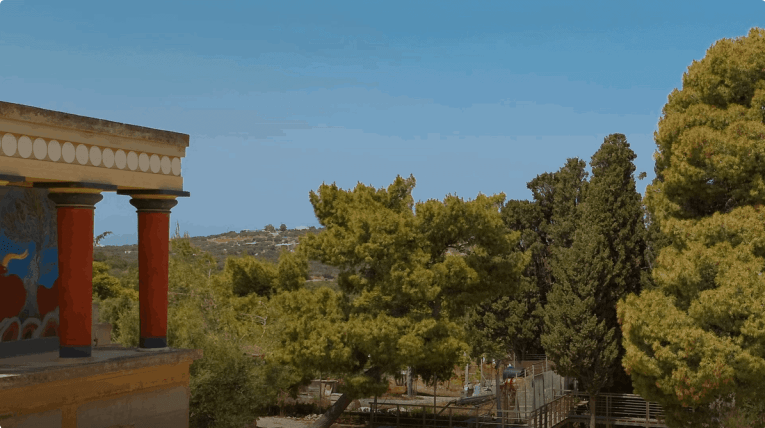
The Minoans
Most would say that one of the prerequisites for the development of a civilisation would be wealth in one form or another. Crete, an island in the middle of the Eastern Mediterranean and seemingly isolated from other of the great civilisations, was able to build wealth by the development of efficient seafaring. Using the lush Cretan forests, expert shipbuilding methods were brought into play allowing success upon success in the region’s commerce. Crete’s position would have also contributed to this as a more than suitable waypoint for sea-borne trading excursions.
Until now, a dearth of written records for Cretan sites and the use of the as yet to be deciphered script Linear A has meant the early Cretan chronology is based on comparisons to developments and dating elsewhere, such as in Egypt and the ancient Near East. The fact that even in these ‘darker ages’ extensive trade networks were already in operation to and from Crete meaning imported goods and styles are found throughout the island on archaeological site digs and in the archaeological museum on the island. This escorted tour will travel often as a day trip to these ancient ruins as part of the itinerary managed by the tour director.
Without a doubt, the most prosperous and well-known period in the history of Crete is the Bronze Age and its Minoancivilisations, likely beginning sometime around 3000BCE. Most early scholars working with the Minoan culture distinguished four main phases based upon the destruction and founding of what they term Minoan palaces and the associated pottery typologies. More recently such clear divisions and dating have proved unpopular with archaeologists. Such absolutes, they believe, ignore too much of cultural differences and possible inequalities, placing undue reliance on similarities. Having said that, the provision of a more digestible overview of the history of Crete for the Bronze Age is best approached by reference to these phases.
The Pre-Palace Period (3000-2000BCE)
During this 3 rd millennium BCE, the Minoan civilisation was in its infancy. However, the transition from Neolithic to Early Minoan seems clearly marked by not only an increase in commerce but also the likelihood of the arrival of immigrants from areas such as Asia Minor, Egypt and the Ionian islands to the north of Crete. Although the sources of metal on the island are very scarce, the newcomers appear to have introduced methods of working with copper, and later, other metals. Success in this would have prompted further population increase by way of migration. In addition, as settlements developed on Crete and new ideas were introduced agricultural production would have also increased bringing about further population increases and also a surplus for trade.
During the early part of this era, although metal-working was being undertaken, the production of everyday utensils and materials involved the use of clay or stone. Pottery from this period was still handmade, the technology of the pottery wheel yet to reach the island. However, perhaps because of the extended leisure time afforded by surplus production, the ceramics produced begin to exhibit new innovative shapes and decoration. Typical of the period’s typology are vessels covered in a lighter-slipped background, then finished with bright red or dark brown striping, clearly reflecting the available basic pigments.
As the period progresses, archaeological site investigations have revealed a rapid growth in shipping activities to ferrymaterials around the island and as part of trade with the ionian islands and Mainland Greece, reflected in the increase of imported wares found on sites. Notable around this time is the appearance of tin to alloy with copper for the new metal bronze. In addition, there was an apparent increase in husbandry and fishing. Harking back to much earlier times, the burial of the deceased in caves continues but there also now appears circular vaulted tombs. Examples of tombs dating to this time can be seen in Messara, Agia Photia and Mochlos, with the new style tombs utilising cliff faces for structural support. Particular strategic settlements developed and expanded around this time as well as the advent of new luxury materials such as gemstones and ivory.
At approximately the same time, evidence of contact to the far north comes in the form of what is believed to be an actual Minoan colony on the island of Kythera in the Peloponnese. While on Crete itself, archaeological site excavations of these ancient ruins have revealed settlements that now have separate areas for cooking, sleeping, work and for storage. At the site of Vaskiliki, walls of some buildings show remains of a plaster and reddish paint while still others are arranged around paved courtyards – clearly a step towards later developments seen elsewhere.
The Proto-Palace Period (2000-1700BCE)
It is now 2000BCE and the Minoans are at a point where they are exporting great quantities of timber and other products of their island. Their craftmanship has continued to move on apace with invention and innovation allowing the Minoans to output an abundance excellent ceramics, jewellery, tools and agricultural products that they ferry to mainland Greeceand south to Egypt. The surplus from these further increased the Minoans’ position within the trading sphere of the Mediterranean and in turn increased their wealth and status.
The first opulent palaces of the Minoans begin to appear at Knossos, Phaestos, Malia and Zakros. Such buildings appear to indicate that there was a wish, or perhaps a need, to move power bases more towards the centre of the island. It has been argued that such major construction activity clearly shows that within the Minoan society at that time, there was a stronger sense of order and the development of something of a more hierarchical structure, hence the terminology of palace. Each of the sites chosen for the palaces are obviously strategic with Knossos situated well above the surrounding plan with a view towards Heraklion. Zakros was positioned to take advantage of its harbour and the sea for trading towards the east while both Phaistos and Malia have commanding views over fertile agricultural plains. Interestingly, all of the chosen sites, Knossos in particular, have traces of much earlier settlements with some estimates of area of the Neolithic settlement at Knossos approaching many thousands of square metres.
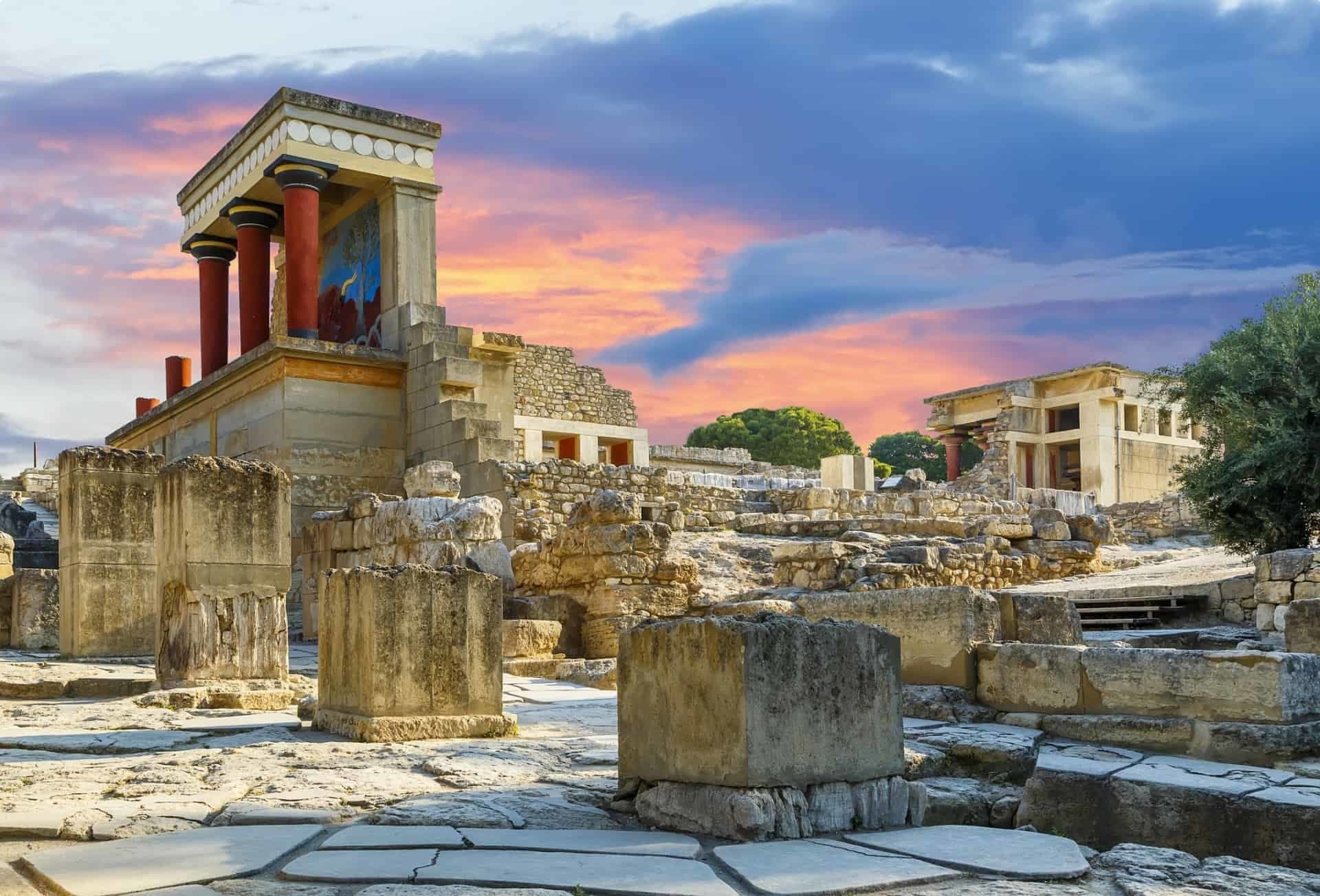
Also during this period of the construction of palaces and reorganisation, evidence for developed religious belief systems becomes prominent with mountaintop sanctuaries and cave-based worship for chosen cults. Archaeological siteexcavations in caves found nearby many of the Minoan settlements have uncovered vast quantities of ceramics that appear to have been used for some form of votive offering. The characteristic Kamares pottery with its incised geometric or floral designs, first appeared at this time, its name derived from the Kamares cave overlooking the palace at Phaistos. Did the Minoans feel it was necessary to thank someone or something for their comfort and successes?
Also indicative of the growing wealth during this period are the appearance of large urban villas in the hinterland of the palaces and their settlements. The idea behind the construction of the famous labyrinth and its fearsome monitor, the Minotaur, is believed by some to have stemmed from a need to protect either or both the wealth and the produce of the settlements. However the absence of any obvious fortifications on the sites point towards a decided lack of external threat and a reasonable stability within. A more efficient type of wheel for pottery manufacture also came into use during this era with two distinctive typologies in place. The two types are a more utilitarian and heavier vessel, with a variety of earth-coloured pigments used for decoration, and the delicate thinner-walled ceramics, used more for ceremony and for export.
The palaces, their settlements and the urban villas all have drainage systems that would have ensured comfort. Also the establishment of trading outposts on other greek island such as the Ionian islands increased as would be expected with the steep upturn of inter-island trading. Coming into use also at this time was a hieroglyphic writing, with the Phaistos Disc providing so far, a unique example of this manner of record. The disc has resisted any attempt to decipher or unravel its meaning but it can been seen in the Heraklion Archaeological Museum if you would like a chance to try your linguistic skill to add further to the history of Crete.
Archaeologists have discovered that these ancient ruins where settlements around the palaces were established Minoan civilisation had sophisticated sanitation systems and exhibit a highly developed system of urban planning. As you travelaround Crete on a Odyssey small group tour your tour guide will take the time on the walking tour of these ancient Minoan civilisation sites to point these features out in these old towns and ancient ruins. Now although, for the most part, the economy was agriculturally based, trade contributed greatly. Outposts on other Ionian islands and in the coastal regions of mainland Greece Anatolia, Egypt were established.
Growth for the Minoans continues unabated throughout this period but it comes to an abrupt end marked by what appears to have been a violent earthquake around 1700BCE.
The New-Palace Period (1700-1450BCE)
The earthquake, probably related to a volcanic eruption of Thira, brought with it destruction of Minoan palaces and their settlements. However, the Minoan civilisation after a relatively short interval of time, rebuilding had taken place on an even grander scale. All of the larger towns and settlements of Minoan Crete displayed constructions of unprecedented beauty and design and what archaeologists identify through their work on the archaeological site relevant to the Minoans as a being a more adapted and functional style of architecture.
The four main palaces at Knossos, Phaistos, Zakros and Malia, as well as a new palace at Kydonia (modern-day Chania) now had luxurious apartments, likely for the ruler and his family. Other features included shrines, storerooms, workshops, baths, paved courtyards with staircases leading to upper floors. Knossos provides the visitor with examples of all of these features, many reconstructed by Arthur Evans during his archaeological site excavations there in the late 19thcentury. While you visit keep in mind that many scholars level criticism at Evans for talking too much licence with his reconstructive work. If you compare the palace at Knossos to others you may well be of the same opinion.
The Minoan civilisation apparently was centred at Knossos reaching its peak in the 16 th century BCE The palaces functioned as both social and religious focal points although the country estate or villa continued to be popular likely housing the well-off merchant class. Crete traded widely in the eastern Mediterranean and beyond, with the Minoans producing pottery, jewellery, and both intricate and more robust metalwork. At home their artisans produced sculpture and created vibrant frescoes while olive oil extracted from the olive grove, and wine and perfume was manufactured for both local consumption and trading abroad. It can be assumed that the majority of the urban populations were involved in the production and exchange systems of the settlements. There would also have been a number of groups working as potters, farmers and also as weavers. Excavations point to the largest commercial centres being located at Phaistos, Agia Triada, Malia and possibly also at the port town of Amnissos.
The thriving Minoan communities spread influence throughout the colonies and on to mainland Greece and by about 1500 BCE certain of the Greek mainlanders from Mycenae appear to have been taking a major role in the Minoan dealings. It was these Mycenaeans who introduced writing in the form of Linear B to Crete with this then used for record keeping.
Unfortunately, around 1450 BCE the Minoan civilisation and culture experienced another devastating blow when it is believed the volcano at Thira once more erupted. The subsequent tsunamis and fires laid waste to most of what the Minoans had so carefully built up over the preceding two and a half centuries. Most of the Minoan palaces including those at Malia, Phaestos, Tylissos and Ayia Triade were completely destroyed although some of the Knossos palace survived somewhat intact. With the base of the Minoans now virtually at an end the power vacuum created allowed the Mycenaeans to step in to take control.
The Post Palace Period (1450-1100 BCE)
A few decades prior to the second devastating Thira eruption, mainland Greece had been invaded by barbarian tribes from their north. The Greek legends refer to these people as Achaeans, Homer’s ‘long-haired Acheans’, and there is the possibility that these people infiltrated or mixed with the Mycenaeans and in turn their dealing with the Minoans. From soon after the eruption, archaeological site evidence indicates a marked cultural shift on Crete and this is reflected in numerous sources. However, certain of the evidence found on ceramics and other artefacts may also point to a successful and peaceful coexistence until around 1300 BCE. Crete was hit by yet another strong earthquake that eradicated the last remains of the Minoan civilization as the once sumptuous palace at Knossos was completely and utterly levelled.
Sources dating to the 11 th century BCE tell stories of powerful Cretan fleets prowling the eastern Mediterranean so it could be assumed that the seafaring culture established by the Minoans continued at least up until this time, although perhaps under different command. It seems that from the downfall of the Minoans, Crete began to live under a long line of successive rulers or masters.
Proto-Geometric Period (1100-900 BCE )
With the final collapse of the Mycenaeans came the end of the Bronze Age in the Aegean. This appears to coincide with an extended period of economic problems impacting negatively upon the culture of the mainland. This period of depression is commonly known as the Dark Age and Greece was left vulnerable. Once Greece was overrun, the remainder of the invaders moved on to Crete to bring new customs not before seen in the island. Cremation was one such custom, and their manufacturing styles amalgamated a debased mix of both Minoan and Mycenaean. A marked decrease in the qualities of both ceramic and metalwork is noticeable in the record and artefacts in the archaeological museum on Crete. One positive aspect though was that the technology for the working of iron was to the island.
It did not take long before ancient Crete began to emerge from the dark and sometime around the middle of the 11 th century BCE the ceramic typologies excavated show technical advancement. The pottery bears the hallmarks of production on a faster wheel. This would indicate either the development of a completely new cultural tradition or at the very least a revival of the past. This pottery is classed as Proto-Geometric and is referred to as indicating transition out of the preceding period into the next.
The Geometric & Archaic Period (900-500 BCE)
Coming out of the Dark Ages brought a rapid expansion of Greek cities and colonies. Described by some as the time of Greece’s intellectual and structural revolution, it was the time when Greek classical philosophy and literature commenced. Likely under the influence of this, and with Crete playing a supporting role in Greece’s revival, Crete’s population rapidly increased with the island drawn closer to the embrace of mainland Greece. This allowed a further influx of a group know as the Dorians. The Dorians’ impact is most obvious in western Crete. Under the direction of the Dorian new towns were established in Western Crete, at sites such as Kydonia (Chania), Phalasarna and Polyrennia. Over time, for reasons unknown, many of the cities in Western Crete became deserted and it is thought their populations headed into the more mountainous areas. This move could have been for security or perhaps to avoid some unexpected climatic or environmental changes such as a sea-level rise.
Dating to this period is the ‘Law Code of Gortys’ found inscribed on twelve columns at the excavation site of Gortys. In its entirety it outlines the basic, and certain intricate structures governing society at that time. It includes laws concerning family relationships, inheritance and property. Additionally, many of the artefacts unearthed from archaeological siteexcavations from this particular period on Crete show that both Dorian and Asia Minor influences dominated art and culture of the time. There are even some scholars today who posit the theory that Crete actually functioned as the cultural and artistic centre of mainland Greece during the 7 th century BCE and possibly somewhat later as Greece and the Mediterranean world moved towards their Classical era.
The Classical & Hellenistic Periods (500-67BCE)
For reasons unknown or undisclosed by the archaeological and archival sources in the Archaeological museum, the 6 th century BCE was witness to pitched and constant battles between the established Cretan cities and towns. Teaming this with further invasions from Asia Minor, mainland Greece and further afield, all which appeared to be challenging the might and power of Knossos, you would expect the problems to have significant effect. Strangely though, considering the circumstances, Crete outwardly suffered little from these disputes.
In what appeared to be a veiled attempt to garner protection and assistance, a group of the Cretan city-states looked to the Macedonian king, Philip (Alexander the Great’s father) while also soliciting help from Mithridates, the king of Pontus, a powerful kingdom bordering the Black Sea. Perhaps as a result of reluctance on the part of those entreated to assist, squabbles continued to escalate between the Cretan cities and their power-seeking rulers. The resultant upheaval and chaos on the island did not go unnoticed by seaborne groups who were able to take advantage of the disputes and lack of cohesion to ferry armed battalions to raid Crete.
One of the best organised of these pirate scourges were sailing from Cilicia in the north-eastern corner of the Mediterranean. In fact, the name Cicilian became synonymous for piracy. It was this particular group who, with the help of some of the Cretans, launched an attack on the Roman city of Ostia from their now well-established base in Crete. As a result of this successful attack at the heart of Rome, Pompey the Great was given free reign to clear the region of pirates under the newly-passed law, the Lex Gabina .
The Romans were further able to take advantage of this situation intervening in the disrupted and fragmented political scene then operating throughout Crete. By 67 BCE the Romans had all but completed their conquest of Crete, in a sense linking it to Cyrenaica, a province of North Arica.
The Roman Period (67 BCE- 330 CE)
As throughout the lengthy history of Crete, that your tour director and local tour guide share with you on your escorted tour, the strategic importance of the island was understood by the conquering Romans. Once under Roman control it helped Rome with further expansion towards the east. Although Rome came up against sustained resistance from many Cretans the island was finally subdued and the population, for the most part settled into a relatively peaceful existence. Crete took on the atmosphere of well-protected cultural pocket of the Eastern Roman Empire (Byzantine). The capital for much of the Byzantium era was Gortys with stadiums, baths and theatres constructed for the swelling population. Knossos, Phaestos and Kydonia (Chania) were other important cities during this time and still today the remnants of sculpture, mosaics along with splendid private and public architecture can be visited as part of your trip itinerary of Crete.

Although there were intermittent raids carried out on the island by groups such as the Goths at the close of the 3 rd century CE, Crete, overall, remained calm and prosperous under Roman rule. In general, the Romans allowed the Cretans their freedom, freedom to follow much of their own culture and customs as they tended the olive grove, manufactured fine pottery products and produced metalwork for export.
The Early Byzantine Period(330-824 CE)
Upon becoming emperor, Constantine the Great, relocated his capital to the city of Byzantium, changing its name to Constantinople (Istanbul). Not only did this recognise the economic growth and importance of the Eastern Empire but also established Christianity as the official religion.
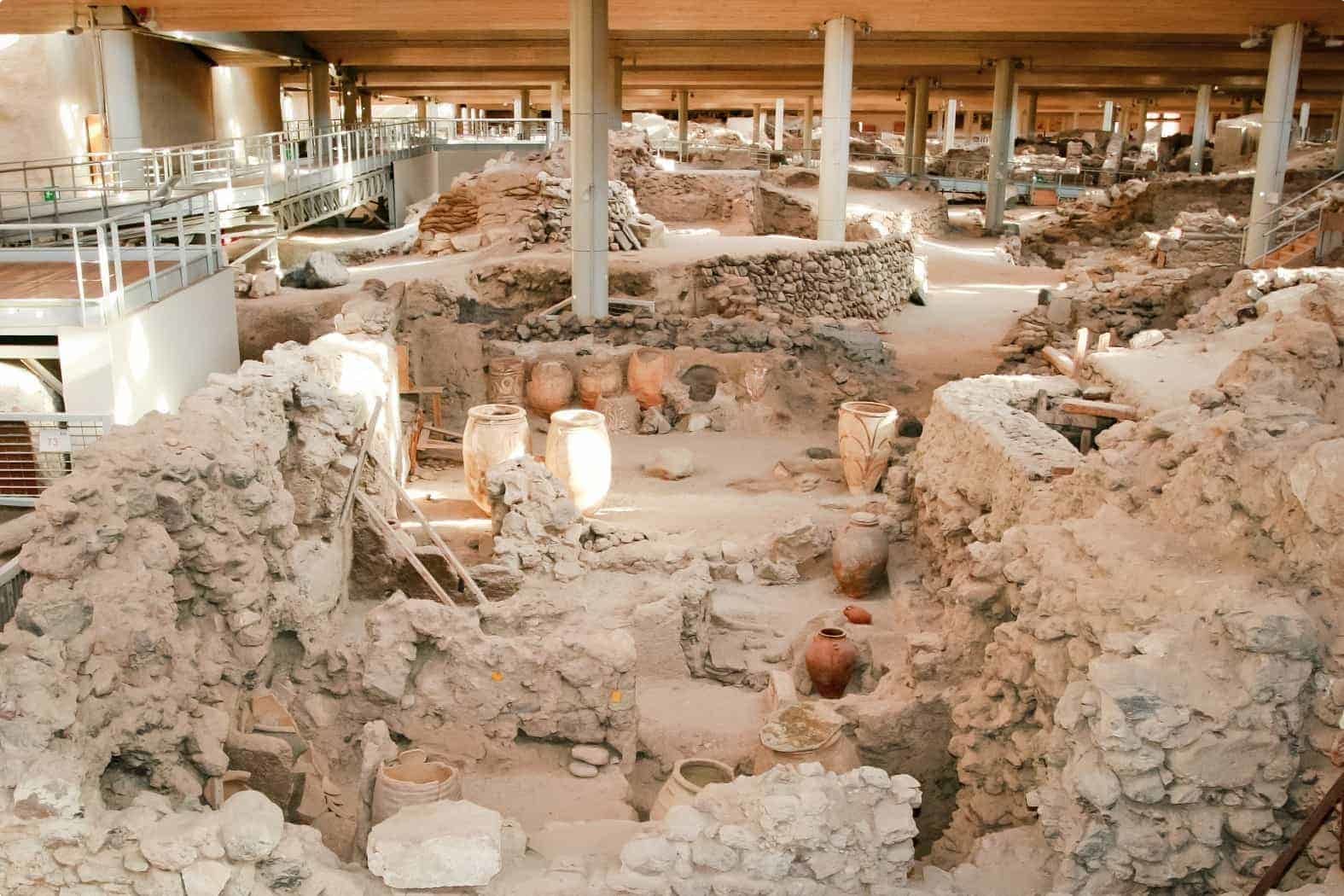
Christianity reached Crete during this early stage, with several of the largest churches on the island being constructed during this era in the established old town of the island and much of the population coming to follow the newly introduced religion. Once again, Crete remained stable and well-organised functioning as something of an outpost for the Empire for almost five centuries. Unfortunately, this was violently disrupted in 824CE with organised raids carried out by Iberian Muslims enabling them to gain control over many parts of Crete and setting up scattered bases over the island.
Under Arab Rule (824-961 CE)
After the capture of the island by the Arabs, Candia (Heraklion) served as the capital of the conquered island and emirate. It was fortified by walls and by a deep trench or gorge that surrounded the city, named by the Muslims, Rabdh el Khandac , literally translated as a trenched fortress. The subsequent names of Chandakas, during the later Byzantine Period and Candia of the Venetian period were derived from the Arabic term. The coastal bases spread over the island allowed Muslim pirates to continue their raids through much of the Aegean. The capture of the island had in fact altered the balance of power in the Eastern Mediterranean with any naval supremacy threatened constantly by the Muslim raiders. Crete, by virtue of its position and landform, offered the perfect haven for the Arab pirates who soon had transformed Crete into the largest market for slaves anywhere in the region.
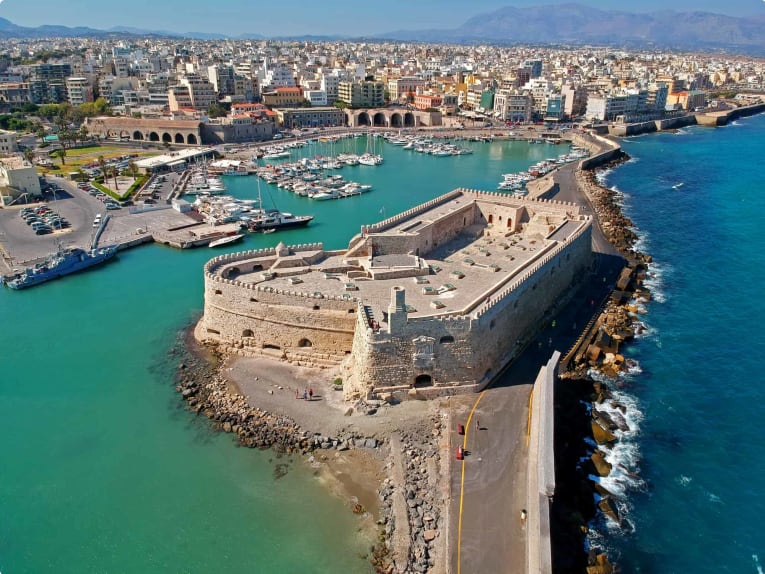
In the hands of the Arabs, Crete continued to reap the harvest from not only the piracy but also from the increased trade flowing through the island. The Byzantines realised the situation was far from satisfactory having lost this valuable outpost to the Muslims. A number of unsuccessful campaigns were launched to retake the island with one final attempt made in 961CE. In the autumn of the previous year, a Byzantine force, led by General Nikiphoros Phokas, laid siege to the Arab capital, finally succeeding when the city surrendered the following spring. The remainder of Crete rapidly capitulated once the capital stronghold had fallen with the island then again under Constantinople. The Byzantines and their retaking of Crete had many advantages not the least being that could use the island as a stepping off point to ferrymaterials for campaigns into North Africa and beyond.
Crete then remained relatively safe and secure in the hands of the Christian Byzantines until around the time of the Fourth Crusade. This crusade, carried out at the very beginning of the 13 th century CE began having the widely promoted objective of freeing Jerusalem from the Muslim yoke. Unfortunately, things failed to go as planned and the Crusaders turned to sack the great city of Constantinople. The destruction of the walled city brought about the decline and fragmentation of the Byzantine Empire. Later in the aftermath of the fateful Crusade, Crete was sold to the growing Venetian trading enterprise. However, before the island could be consolidated, Venice’s rivals, the Genoese, took the opportunity to seize control. It was not until some eight years later that Venice was able to wrest control from Genoa to reorganise Crete as Venetian colony known as the Kingdom of Candia.
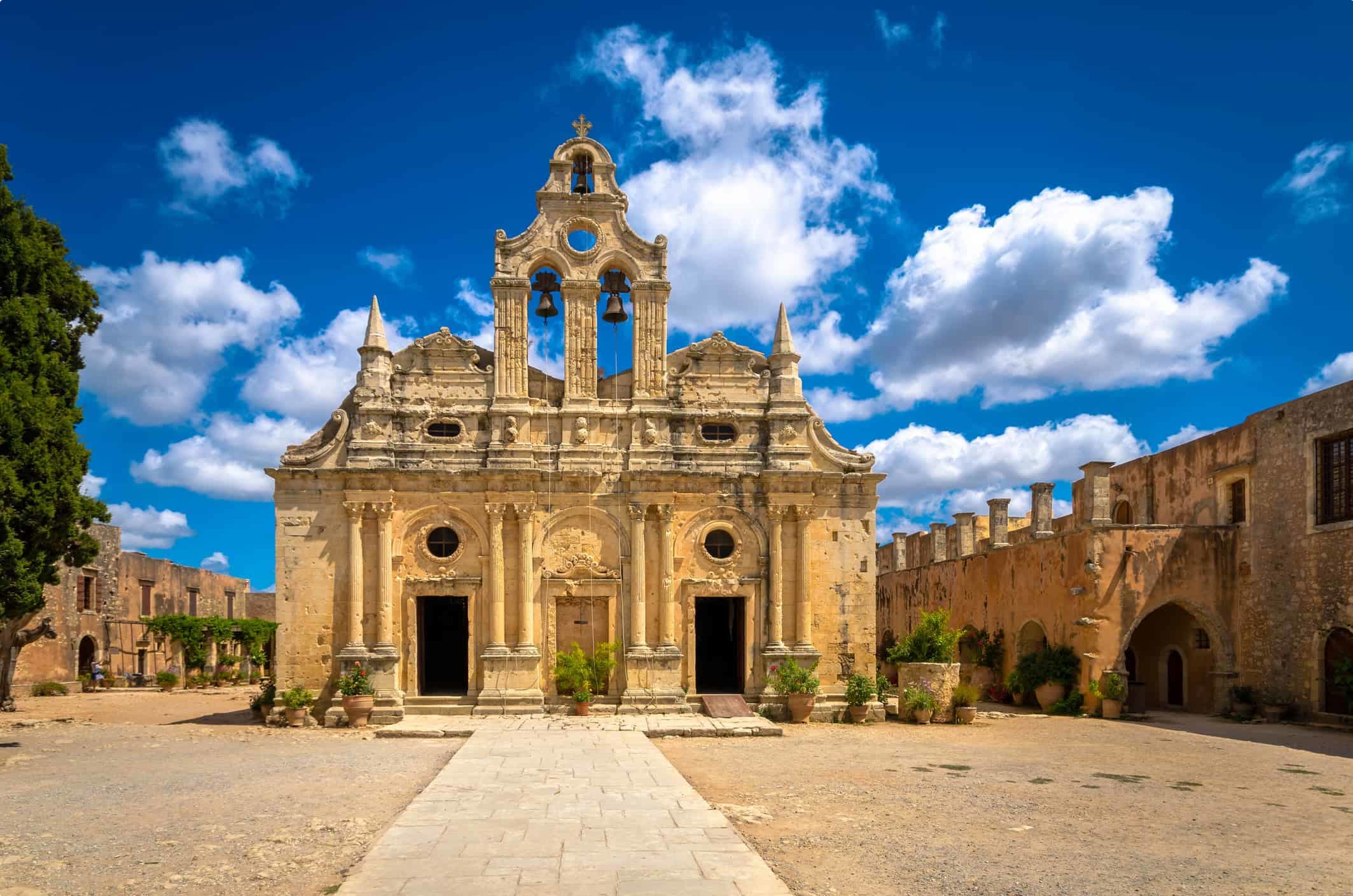
Venetian Crete
As with previous rulers of Crete, the Venetians used Crete as a centre for the eastern section of their commercial ventures. They also utilised produce from this island kingdom exporting many culinary delights from Crete such as wine, wheat, cheeses and timber although the latter was dwindling in ready supply. From the commencement of Venetian rule over their new colony, the Cretan people maintained their orthodox style of Christianity, continued to speak Greek and ensured their culturally-linked customs were practised whenever or wherever possible. This course of action by the Cretans meant they were in constant opposition to their rulers who had also asserted authority in a most discriminatory manner, keeping most of the benefits of the increased commerce out of the hands of the local populace.
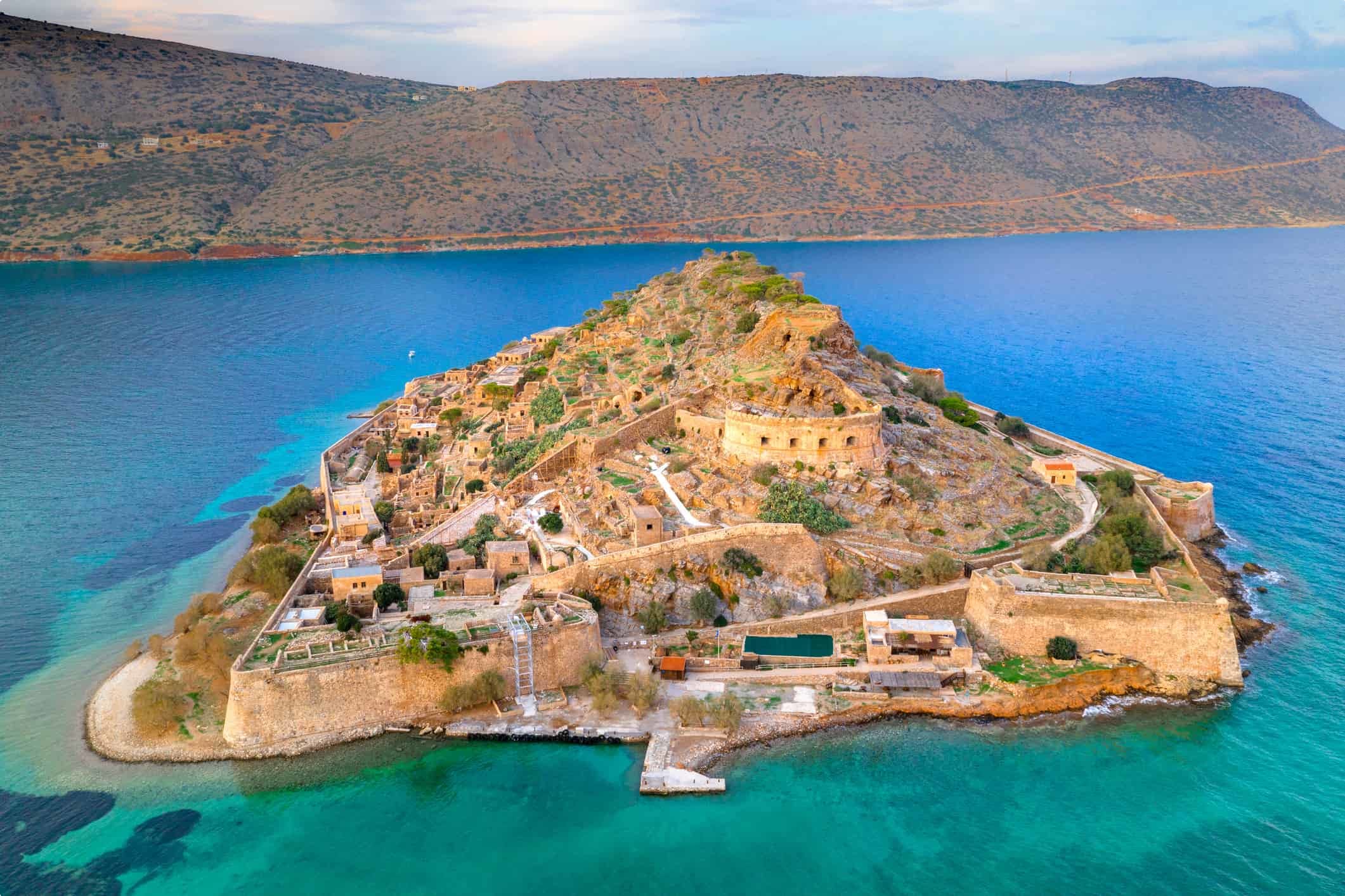
The 15 th and 16 th centuries witnessed a great reversal in the fortunes of the Venetian Empire as the Ottomans gradually took control of many of the territories of Venice. By the mid 16 th century, Crete was the only remaining possession of the trading nation in the Aegean. This continued expansion by the Ottomans soon came to involve the Cretan population, with parts of the island ravaged by the Turks again and again.
As is often the case in history, a coincidence of events amplifies a situation and together with the emergence of the Ottoman threat came crushing economic problems for the Venetian Republic. The fact that the Cretans had disliked, and actively resisted the rule of Venice from the start added fuel to the already smouldering fire. On-going and widespread revolts by the locals further undermined the Venetian power and authority. Much of the ferment built and originated in the mountainous areas that had stayed outside of any effective control by the Venetian occupation.
Crete Under the Ottomans (1669-1899CE)
Commencing in 1645, the Cretan War, or the final Ottoman-Venetian War saw Ottoman troops very rapidly overrunning most of island. Perhaps due to the fortification systems so well-planned during the early Arab occupation, the city of Candia (Heraklion) was able to hold back the Ottoman siege for more than twenty years. Such a prolonged stalemate of course dictates continual appraisal of supply lines for both sides and because of this the war also involved a number of naval battles to halt resupply of the Ottoman army. An attempt to blockade the Dardenelles failed to come to fruition because of a lack of numbers, even though Venice had a level of support from other Christian nations. The siege came to its conclusion in the form of a poorly (from the Venetian point of view) negotiated peace treaty. Venice retained a few off shore islands around Crete including Spinalonga that ultimately fell some years later in 1718.
During the centuries of Ottoman rule in Crete there were a great number of significant rebellions against the Muslims but the Greek War of Independence in 1821 brought about greater participation in the rebellions. When the Turkish rule first became established in Crete, a large percentage of the local population converted to the Islam to take advantage of advantages offered by the newly installed system. Estimates vary greatly but it is possible that close to 45% were Muslim by the time of the independence war. Many believe this conversion was for appearance only.
Spurred on by the independence movement on mainland Greece much of the Christian population rose up against the rule by the Turks. These revolts were met with a merciless response and although plague and famine decimated many of the Muslims, the Christians suffered most severely and rebellions were finally crushed. However, the moment Greece had gained its independence there were renewed violent clashes. Over time, the Ottoman administration gave into some of the demands, granting concessions such as the equal right to worship and limited political participation in particular areas. Unfortunately, the main demand of union with Greece was never on the table for discussion which increased the tensions over the next decades.

In 1866, the Cretan Revolt began with support from Greece and even some European countries. The uprising that was to last three years was finally quelled by greater political concessions from the Ottomans that in essence amounted to localised independence. Over the years, further disputes and extension of further concessions saw Crete reaching the point of a semi-independent parliamentary state within the Ottoman Empire under an Ottoman Governor.
The last Cretan insurrection in 1897 brought the declaration of war on Greece by the Ottomans, a completely untenable option in the eyes of the great powers of Europe, France, Great Britain, Germany, Austro-Hungary, Italy and Russia. A multinational force was immediately sent to Crete occupying key cities and expelling all Ottoman troops from the island. By the end of the following year, Crete was no longer considered part of the Ottoman Empire and was to be under autonomous rule as the Cretan State.
The Cretan State (1898-1913CE)
Prince George of Greece came down from mainland Greece and was appointed the High Commissioner for Crete at the close of 1898. Soon after an Executive committee was formed with a Chania-born lawyer, Eleftherios Venizelosas holding the position of the Justice Minister. In a matter of less than a year, serious disagreements regarding the future of Crete had arisen with this culminating in Venizelos resigning his position to challenge the arrangements politically. He and his followers’ most basic demand was the political union of Greece and Crete.
The Cretan Assembly voted in support of Venizelos but it was not until five years that the Greek flag finally flew over Chania, the end of a centuries-old struggle for the Cretan people and another chapter in Cretan history.
Escorted small group tour of Crete
Odyssey Travellers escorted small group tour of Crete provides a platform for the senior traveller interested in continuing to learn, whether as a couple or solo traveller, about this fascinating country full of history, incredible people, and stunning scenery. To bring the history to life on this small group tour to this unique part of the the Mediterranean Odyssey Traveller offers a variation of its escorted small group tour of Crete. The Eastern Mediterrean small group escorted tourfor 21 days spends 5 nights on Crete with a day trip collection exploring the island as part of the wider group of Mediterranean islands. This small group tour commences in Athens. a short version of this small group tour is also available.
Articles about Greece & Crete
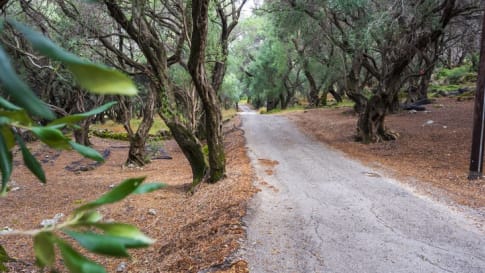
Corfu, Greece
Corfu differs to much of the rest of Greece, with notable limited archaeological sites but an abundant mixture of forts, medieval castles, palaces, Greek orthodox churches, and monuments.
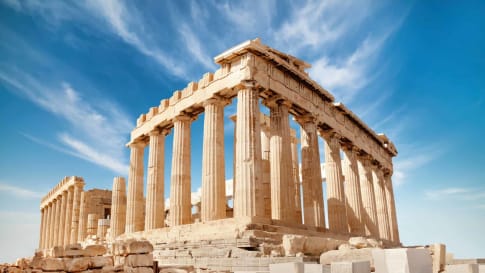
Creating Athens
Creating Athens Aerial view of Athens, Greece This article Creating Athens traces the civilisations of antiquity to the rise of Athens as a city-state after the world’s first “Dark Age”. It is intended as background…
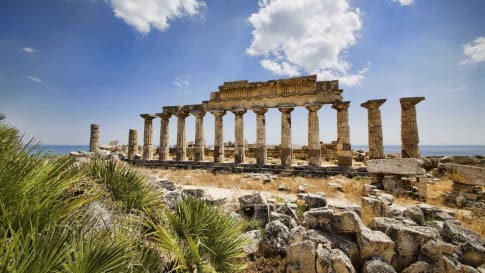
Dawn of Greek Civilization: The Definitive Guide for Travellers
The Beginning of Human Civilisation Ancient Greece stands out as a pivotal civilization that significantly influenced human progress. The period between 800 B.C. and 500 B.C., considered Ancient Greece, marked a flourishing era in various…
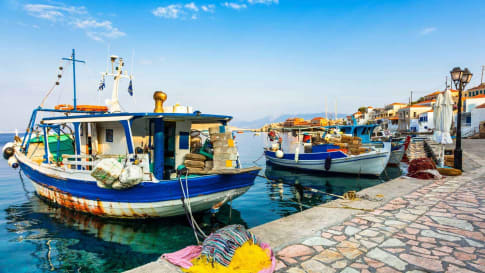
Empires Crossing the Mediterranean: 1130-1300
As a sea connecting continents and stretching from the Atlantic Ocean in the west to Asia in the east, the Mediterranean has for centuries been a centre of trade and exploration.
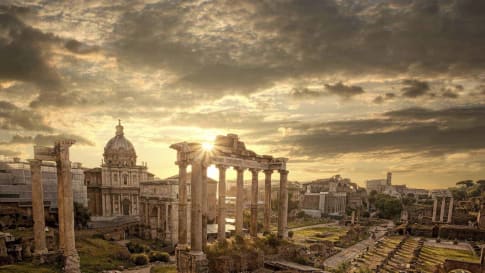
Exploring Ancient Cities
Exploring Ancient Cities What can we learn from exploring the ancient world? What do we take away from the wealth of knowledge uncovered as archaeologists investigate the ruins of past societies, while social scientists speculate…
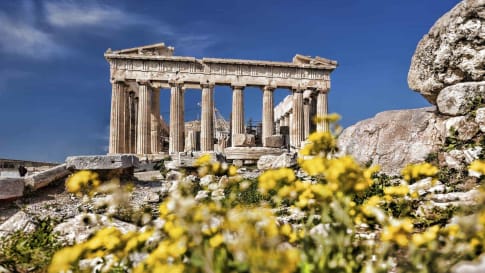
Greek Islands and Cyprus: Discovering the East Mediterranean
The Greek Islands and Cyprus are teeming with opportunities to visit archaeological sites and historic locations, while getting to know the region’s marvellous contemporary culture. Following the financial crisis, Greece became known as the centre…
Related Tours

20 days
Sep, AprCrete Small Group Tour: The Minoans
Visiting Greece
Crete rich in UNESCO World heritage sites this small group escorted tour provides a travel experience for guests with experienced local guides to remember. For senior couples or single travellers who seek to travel with other like minded people to destinations rich in ancient history then this in one of many small group journeys to be enjoyed.
From A$13,500 AUD
View Tour
22 days
Apr, Sep, MayGreece small group escorted history tour
Visiting Greece
Our 22 day small group tour explores the land of great philosophers, myths, and legends. We will learn about the culture and heritage of modern Greece whilst exploring and learning Athens, which only found independence in its uprising from the Ottoman Empire in the 19th century.
From A$14,145 AUD
View Tour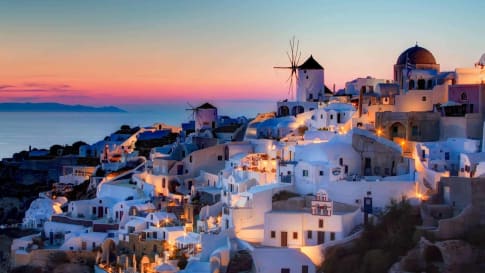
21 days
Apr, OctSantorini, Crete and Cyprus Small Group Tour | Eastern Mediterranean Islands Tour
Visiting Cyprus, Greece
A fascinating small group tour, with an amazing mix of culture and history – the islands of Greece, the cradle of Western civilisation, where traces of a centuries-old history exists. Visit Santorini, a remnant of a volcanic era; Crete, the home of the Minoan civilisation with important archaeological finds at Knossos and Phaistos. Rhodes, inhabited since the Stone Age; and venture further to the island of Cyprus, where east meets west.
From A$17,545 AUD
View Tour
